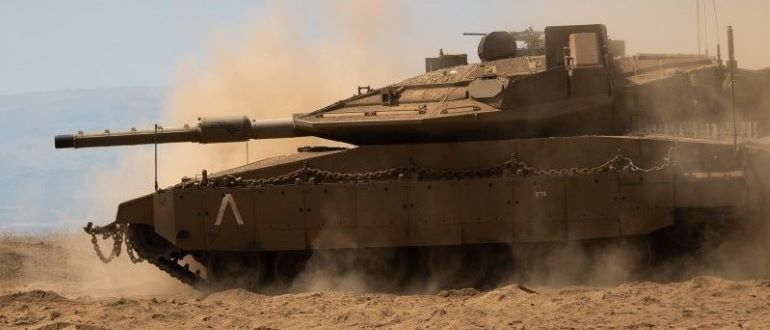
While there has been a large focus on the use of artificial intelligence as a propaganda tool, the hot conflicts in Ukraine and Israel are proving to be living labs for the accelerated use of AI and other IT tech tools for use on the battlefield. In Ukraine, in particular, reports suggest that AI is even being used to target strikes autonomously. The use of AI by the Israeli Defense Force (IDF) is more shrouded in secrecy, but it is certainly being used as a targeting aid to defeat what might be an otherwise overwhelming missile attack from Hamas in Gaza.
The increasing use of AI on the battlefield comes amidst hopes of some type of agreement on the use of autonomous AI in weaponry, especially as it applies to nuclear arms, in the wake of the recent San Francisco meeting of President Joe Biden and Chinese Premier Xi Jinping. But at this stage, both countries appear reluctant to limit their freedom of action when it comes to AI. Reports suggest the two powers will create some type of “AI channel” for discussions. International efforts have been so far limited to voluntary and non-binding agreements that leave a lot of “wiggle” room.
Ukraine has developed its own AI after rejecting 10 others in the certainty that a home-grown AI would be more beneficial and sidesteps any requirements about reporting to a commercial company. Ukraine’s AI primarily focuses on computer vision data provided by a huge network of cameras and drones. Name and object character recognition (OCR) can quickly identify things like Iranian-built kamikaze Shahed drones, for example, as opposed to standard missiles. AI also has helped with targeting of Ukraine’s own missiles. Much of this AI work is being accomplished by Ukraine’s IT Army, said to number 250,000, many of whom operate out of innovative “gremlin garages” with a sliver of the budget typically associated with Western IT companies. AI is also being used to analyze Russian radio traffic and remove land mines. Russian military AI use, meanwhile, seems stuck in a disconnect between its ambitions and practical uses with autonomous drones, in particular, reportedly in short supply.
Some news agencies report that the seriously-outmanned Ukraine has gone a step further by allowing drones equipped with AI to identify and attack targets in some instances without human control, raising the specter of “killer robots” on the battlefield. The U.S. military already has a two-year “Replicator” initiative in the works to field thousands of relatively inexpensive autonomous systems, largely as a counter to China’s numerical superiority in areas like naval vessels. An Australian company called Anduril, named for a sword in the Lord of the Rings saga, is supplying munitions-capable, AI-powered Ghost Shark sea drones to Ukraine that may partially explain Ukraine’s successful naval operations against the Russian Navy in the Black Sea, despite its own lack of ships.
While it appears Ukraine may be using autonomous AI to attack large objects like tanks, the capability to target individual soldiers almost by name is out there. A facial recognition system, supplied free of charge by controversy-plagued Clearview, has identified more than 230,000 individual Russian soldiers and officials who have participated in the war in Ukraine, according to a Time magazine report. Clearview is used to detect infiltrators, identify members of pro-Russian militias and collaborators, and even children that Ukraine says have been abducted across the Russian border. The Clearview tech marks the first use of a “combat recognition system” that could be potentially used to target key enemy personnel. A munitions-carrying AI drone could loiter in place until it spotted an opposition general, for example.
Meanwhile, in Israel, which aims to be an “AI super power,” the technology is assisting with the quick targeting of air strikes against Hamas targets in Gaza—a system dubbed the Fire Factory—but its accuracy against military targets is currently unknown. AI is also helping to defend against incoming missile strikes seeking to overwhelm by sheer numbers Israel’s vaunted Iron Dome missile defense system. The use of AI by the Israeli Defense Forces (IDF) is increasing with its incorporation into mobile platforms like its new Barak “super tank.” A key feature is the Barak’s Ironvision helmet which allows the tank crew “to see through the vehicle’s armor” at the touch of a button, thanks to an array of external sensors and camera.
Thanks largely to AI, the tank is able to learn, adapt, navigate and target through battlefield situations independently. A pair of Barak tanks will be able to perform missions that would have formerly required a tank platoon to accomplish, says the IDF.
Most analysts agree that Ukraine and Israel are proving to be unprecedented testbeds for the accelerated use of AI in combat, a development that would have normally taken much longer in peace time. AI systems are now being trained with real data from real wars which means AI will be even more instrumental and effective in the next armed conflict, one now most likely to include autonomous AI operations.


